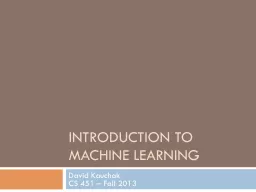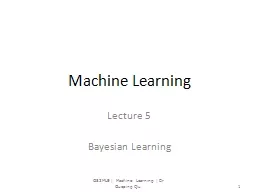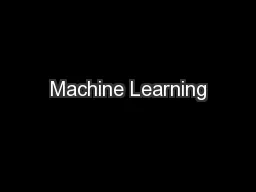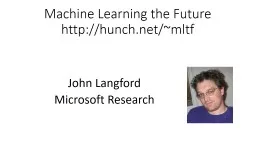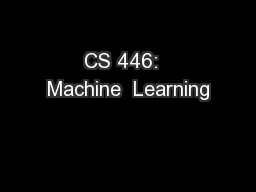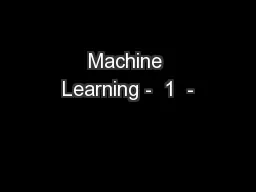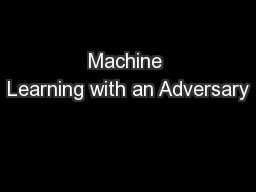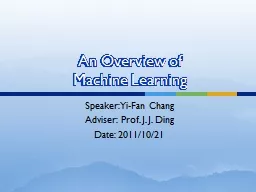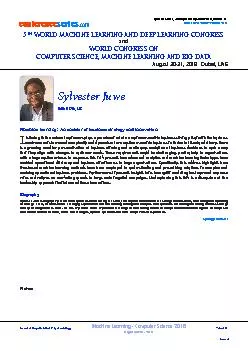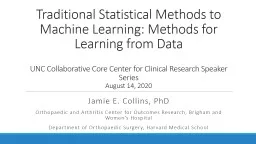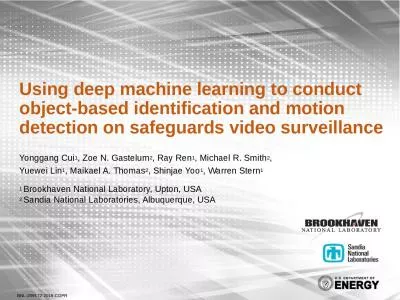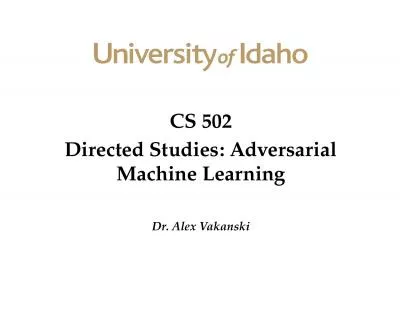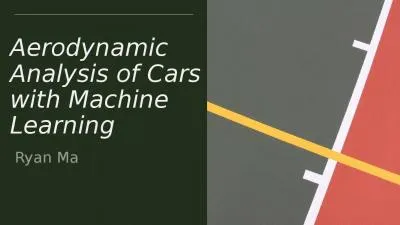PPT-Introduction to Machine Learning
Author : ellena-manuel | Published Date : 2017-06-22
David Kauchak CS 451 Fall 2013 Why are you here What is Machine Learning Why are you taking this course What topics would you like to see covered Machine Learning
Presentation Embed Code
Download Presentation
Download Presentation The PPT/PDF document "Introduction to Machine Learning" is the property of its rightful owner. Permission is granted to download and print the materials on this website for personal, non-commercial use only, and to display it on your personal computer provided you do not modify the materials and that you retain all copyright notices contained in the materials. By downloading content from our website, you accept the terms of this agreement.
Introduction to Machine Learning: Transcript
Download Rules Of Document
"Introduction to Machine Learning"The content belongs to its owner. You may download and print it for personal use, without modification, and keep all copyright notices. By downloading, you agree to these terms.
Related Documents

